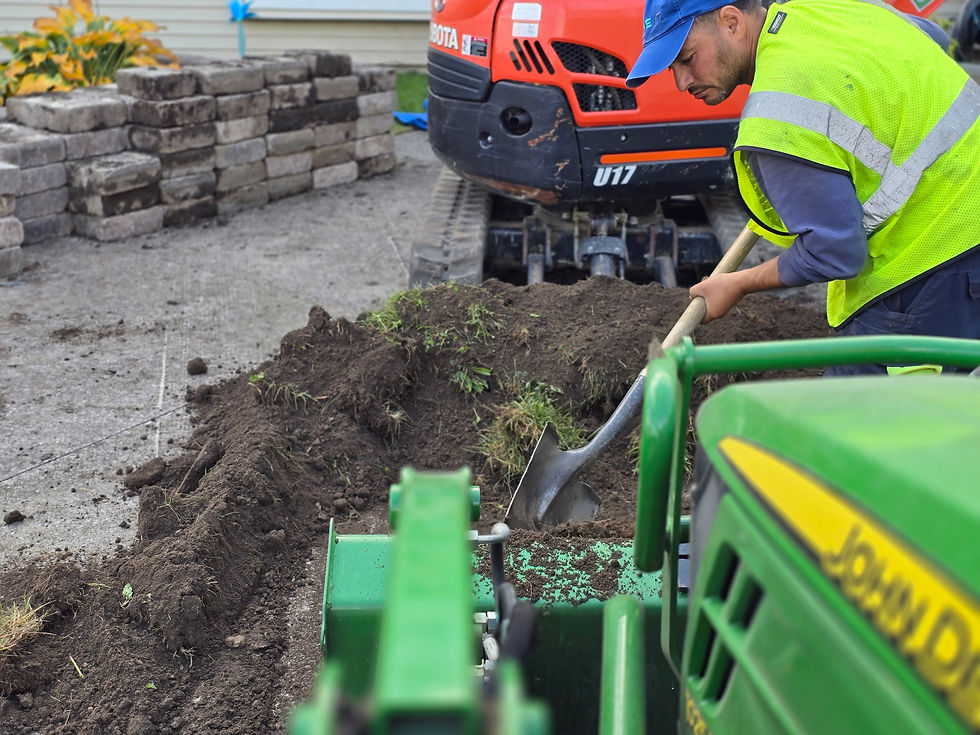The Superior Aeration Technique: Why Reciprocating Aerators Outshine Drum-Style Aerators
- Lawn Guru
- Mar 17, 2024
- 2 min read
Unpacking Aeration
Aeration is the process of making holes in the lawn to allow air, water, and nutrients to penetrate the grass roots. This helps the roots grow deeply and produce a stronger, more vigorous lawn. The primary reason for aerating is to alleviate soil compaction. Compacted soils have too many solid particles in a certain volume or space, which prevents proper circulation of air, water, and nutrients within the soil.
Drum-Style Aerators: A Brief Overview
Drum-style aerators use a cylindrical drum that is rolled over the lawn. As the drum rolls, spikes or cores attached to the drum punch holes into the soil. While drum aerators are simple and straightforward in their design and operation, they have significant limitations, especially when dealing with uneven terrain or compacted soil.
The Reciprocating Aerator Advantage
Reciprocating aerators, on the other hand, operate quite differently. They have tines that move up and down (reciprocate) as the machine moves across the lawn. This reciprocating action has several advantages over the rolling action of drum-style aerators:
Deeper and More Consistent Penetration: Reciprocating aerators can achieve deeper and more consistent penetration due to the direct vertical force applied by the reciprocating tines. This is particularly effective in compacted soils where deep penetration is necessary to alleviate compaction and promote root growth.
Improved Maneuverability and Efficiency: The design of reciprocating aerators allows for greater maneuverability, making it easier to navigate around obstacles and in tight spaces. This results in a more thorough and efficient aeration process, ensuring that more of the lawn is effectively aerated in less time.
Less Stress on the Lawn: The up-and-down action of the reciprocating aerator is less likely to tear the grass or disrupt the lawn's surface, leading to a healthier lawn post-aeration. This is especially beneficial for delicate or stressed lawns that might be further damaged by the more aggressive action of drum-style aerators.
Adaptability to Varying Soil Conditions: Reciprocating aerators can adapt to varying soil conditions more effectively than drum-style aerators. The reciprocating tines can penetrate soils of different compaction levels with consistent effectiveness, whereas drum aerators may struggle with highly compacted areas.
Enhanced Soil-Core Extraction: The mechanism of a reciprocating aerator often allows for better soil-core extraction, which is essential for relieving soil compaction. Removing cores from the soil (as opposed to simply punching holes) creates space for air, water, and nutrients to enter and nourish the soil and root system.
Conclusion
While both drum-style and reciprocating aerators serve the essential purpose of aerating lawns, reciprocating aerators offer a more effective, efficient, and gentle approach to aeration. Their ability to deliver deeper penetration, maneuver easily around obstacles, and adapt to various soil conditions make them a superior choice for lawn care professionals and homeowners alike seeking to maintain a healthy, lush lawn. The investment in a reciprocating aerator can lead to significant long-term benefits for the lawn's health and vitality, making it a wise choice for those serious about lawn care.








Comments